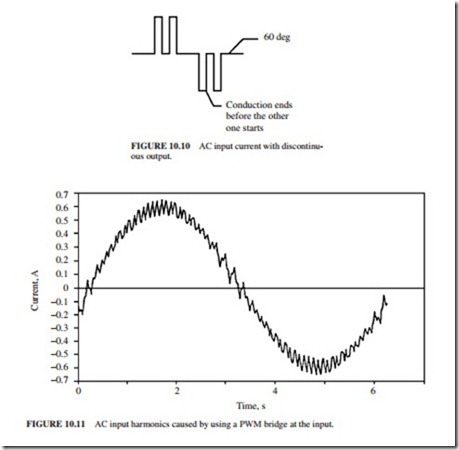REGENERATION
The mechanical energy in the load can be regenerated back to the ac line (by lowering the synchronous speed below the actual mechanical speed of the load) by using a PWM bridge exactly like the one installed at the output. The second PWM bridge is installed at the input. It is identical to the one used on the output, except that it is turned around so that the ac signal is fed into the three-phase terminals and the dc signal is connected to the dc input as follows:
Three-phase ac input → PWM bridge → dc link including capacitors and inductors
→ PWM bridge → three-phase ac output
The PWM bridge at the input can be used to provide good control of the ac line power factor and harmonics. Figure 10.10 illustrates the ac input when the output is discontinuous (no inductors are used in the dc link).
Figure 10.11 illustrates the ac input line current when the PWM bridge is used at the input. This is a major improvement over the diode bridge. However, the current sine wave contains harmonics based on the IGBT carrier frequency (usually 1.4 to 5 kHz). These harmonics are, in reality, more troublesome than the discontinuous current obtained using the diode bridge.
The main advantage of using the PWM source bridge at the input is the ability to regulate the power factor, which is normally set to unity (in some cases, it can be set to lead to compensate for other equipment, depending on the kVA rating of the converter and the applied load). However, this option doubles the inverter cost.
